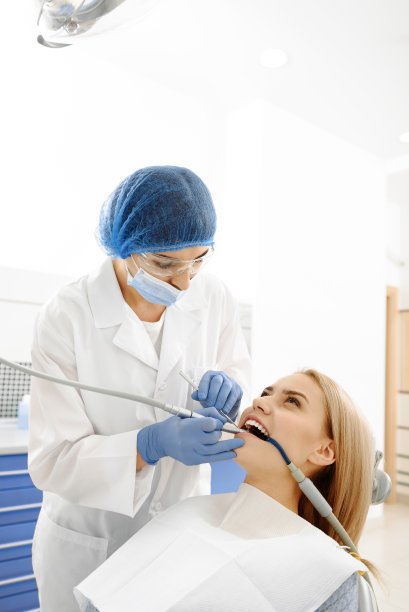The Essential Guide to Understanding the Process and Recovery After Extracting a Tooth for Better Oral Health
Summary: Understanding the process of tooth extraction, its recovery, and subsequent oral health is crucial for individuals facing dental procedures. This essential guide covers the key stages of the extraction process, including preparation, the actual procedure, post-extraction care, and significance in maintaining oral health. Comprehensive knowledge of what to expect can alleviate anxiety and empower patients to promote faster healing. Preparedness can lead to better outcomes, minimizing potential complications and ensuring that the overall journey of dental health remains positive. With this guide, patients will be equipped with the understanding necessary to navigate through tooth extraction and emerge healthier.
1. Preparing for Tooth Extraction Procedures

The first step in the journey to healthier teeth often occurs well before the extraction itself. Patients are generally advised to schedule a thorough consultation with their dentist. During this assessment, the dentist will evaluate oral health, discuss the reasons for extraction, and review medical history to mitigate any risks involved in the procedure. This thorough examination provides a solid foundation for preparing both physically and emotionally for the extraction.
Patients should also be informed about the specific type of anesthesia that will be used, whether local or general. Understanding how anesthesia works can alleviate fears associated with the procedure. Furthermore, patients might need to arrange for transportation home due to the sedation effects, making pre-procedure planning crucial.
Before the extraction day, patients are typically advised to refrain from eating or drinking for a specific duration, especially if undergoing sedation. Clear communication with the dental team about any medications and health concerns can help tailor the procedural experience to individual needs, ensuring a smoother operation.
2. The Tooth Extraction Procedure Explained
The extraction procedure itself usually takes place in a dental office, where the environment is designed for patient comfort. Once seated, the dentist will administer anesthesia to numb the area, preventing pain during the extraction. For more complicated cases, oral surgeons may perform the procedure under sedation or general anesthesia. Understanding this aspect helps patients feel more relaxed.
After numbing, the dentist will gently loosen the tooth using specialized instruments. If the tooth is impacted, a more intricate method involving cutting the gum and potentially removing bone around the tooth may be necessary. Educating patients about this process clarifies why extraction might be complex and not just a simple removal.
Following the tooth removal, the dentist will provide care instructions, including how to manage any bleeding and how to take any prescribed medications. Knowing what happens during the procedure can significantly reduce anxiety and encourage a more positive outlook for post-extraction care.
3. Essential Post-Extraction Care Tips
Post-extraction care is crucial for a successful recovery. Immediately after the extraction, patients are advised to bite down on gauze pads to control bleeding. Its essential to follow the dentists instructions regarding gauze changes and timeframes for reducing bite pressure. Additionally, slight swelling is common, and using ice packs can help manage this uncomfortable side effect.
In the first 24 hours, patients should ideally avoid strenuous activities and stick to soft foods. Staying hydrated is vital, but they should avoid using straws as suction can dislodge the blood clot forming in the socket. This can prevent a condition known as dry socket, which can prolong healing and cause significant pain.
Regular monitoring of the extraction site is advised in the days following the procedure. Patients should watch for unusual symptoms, such as excessive pain, fever, or prolonged bleeding, and communicate with their dentist if these occur. Compliance with follow-up appointments can ensure healing is on track, solidifying the pathway to better oral health.
4. Maintaining Oral Health Post-Extraction
Once the extraction site has healed, maintaining optimal oral health becomes a priority. Good dental hygiene practices, including regular brushing, flossing, and using mouthwash, are essential to prevent infection and maintain healthy gums. Patients should aim to adopt these practices consistently, not just around the extraction area but for overall oral health.
Furthermore, regular dental check-ups are crucial in keeping a proactive approach to dental care. These visits allow dentists to monitor oral health and address potential issues before they escalate. Developing a good relationship with a dental provider can encourage better compliance with preventive measures.
Finally, educating oneself about the impact of nutrition on oral health can lead to better choices. Foods rich in vitamins and minerals support healing and overall dental well-being. Giving attention to diet after an extraction can set the foundation for better oral health in the long run.
Summary: Understanding the extraction process and recovery journey prepares patients for better oral health outcomes. By knowing what to expect, from preparations to post-care practices, individuals can navigate tooth extraction with confidence, ensuring proper healing and preventing complications. A comprehensive approach to oral care strengthens the foundations of lasting dental wellness.
This article is compiled by Vickong Dental and the content is for reference only.



